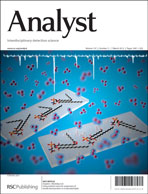Remote and automated detection of organic compounds in subsurface aquifers is crucial to superfund monitoring and environmental remediation. Current monitoring techniques use expensive laboratory instruments and trained personnel. The use of a filled tubular preconcentrator combined with a chemicapacitive detector array presents an attractive option for the unattended monitoring of these compounds. Five preconcentrator materials were exposed to common target compounds of subsurface remediation projects (1,1,2-trichloroethane, trichloroethylene, t-1,2-dichloroethylene, benzene, and perchloroethylene). Rapid heating of the tube caused the collected, concentrated effluent to pass over the surface of a chemicapacitive detector array coated with four different sorbent polymers. A system containing a porous ladder polymer and the sensor array was subsequently used to sample the analytes injected onto sand in a laboratory test, simulating a subsurface environment. With extended collection times, effective detection limits of 5 ± 3 ppbV for 1,1,2-trichloroethane and 145 ± 60 ppbV for benzene were achieved. Effects of the preconcentrator material structure, the collection time, and sensor material on the system performance were observed. The resultant system presents a solution for remote, periodic monitoring of chlorinated organic compounds and other volatile organic compounds in a soil matrix.

You have access to this article
 Please wait while we load your content...
Something went wrong. Try again?
Please wait while we load your content...
Something went wrong. Try again?


 Please wait while we load your content...
Please wait while we load your content...